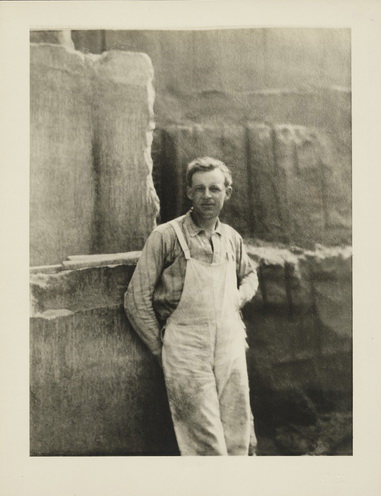 Henry Keller, ca. 1920. Henry G. Keller papers, circa 1880-1962. Archives of American Art, Smithsonian Institution. |
Henry G. Keller | |
| Birth Date: April 3, 1869 |
||
| Death Date: August 3, 1949 Artist Gallery |
||
| Charles Burchfield, a student of Henry Keller’s, wrote of him in 1936: “Some of his best work has been done in transparent watercolor. In many of them he shows somewhat the influence of the Chinese, who he has always admired and studied, not in any imitative manner, but in the fundamental sense that he has…learned to say a great deal with economy of means and little apparent effort”.
Henry Keller’s family was German and came from Klingenmunster, Germany. Their plans to immigrate to Cleveland were made several years in advance; but during their trip over the Atlantic, a bad storm waylaid their trip and Keller was born off the shores of Nova Scotia on April 3, 1869. This fact, and the year of his birth, was recorded as 1870 since his parents and Keller himself did not want any claim for military service in Germany.
The young painter became a gifted teacher whose interest in the visual effects of converging colors was aroused when he studied in Europe at the advice of New York artist, Merritt Chase. “…I always had sense of rhythm and my teacher called it mannered,” said Keller. This rhythm was probably advanced by his early apprenticeship as a circus display specialist in lithographic posters for Ringling Brothers Circus and Buffalo Bill’s Wild West Show.
In his 43 years (1902 – 1945) at the Cleveland Institute of Art this inspired and inspiring teacher always encouraged individual style. The artist had a summer school at his Berlin, Ohio farm retreat, where he interested his students in the Post Impressionist and New Decorative style.
Keller’s life was rich and rewarding. His vision, plus his understanding of nature, took the viewer beyond reality into the creative world of ideas in which he lived. His contribution as an artist and teacher was a major factor in the Cleveland art scene. He never lost his allegiance to Cleveland, and it was his final wish that he should rest upon the heights along Lake Erie.
|
||


